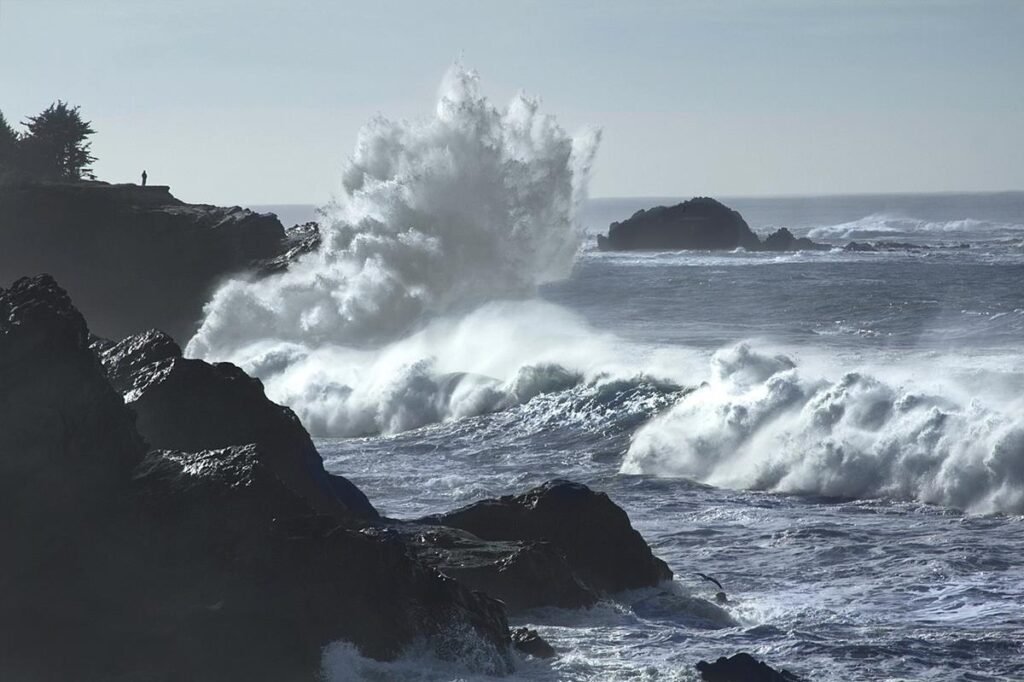Wetting and drying or slaking is an example of mechanical or physical weathering. It occurs when rocks exposed to the surface undergo alternating hydration and dehydration.
Hydration or wetting adds water. This makes rocks expand or increase in volume. In contrast, drying removes water moisture, causing rocks to contract or shrink. As they swell or shrink, they will exert expansion and contraction stress.
These internal stresses can cause microcracks, propagate existing cracks, disintegrate, or disaggregate rocks.
Also, they will cause fatigue. Fatigue occurs from cumulative cyclic shrinking and expansion below the failure or fracture level. It will also initiate and propagate cracks.
Lastly, slaking increases porosity, i.e., the size and number of cracks, pores, and microcracks. This will promote other physical weathering processes, such as salt wedging and frost weathering. Also, it will favor chemical weathering.

How does slaking occur?
For a long time, geologists and other scientists were skeptical about whether wetting and drying causes weathering. However, recent studies have confirmed that they do
The next obvious question you have is why it happens. The answer is straightforward. Wetting and drying cause weathering because some minerals like smectite and vermiculite swell considerably when wet and shrink when dry.
To elaborate, water will enter cracks or pores during a wetting cycle. Some minerals adjacent to these voids will take in the water and swell or expand.
The swelling makes the minerals larger. The increase in volume will make them exert pressure or stress on void walls.
This will cause small fractures (microfractures) along planes of weakness. Also, it will propagate existing fractures, making them larger. However, this only happens when the swelling pressure is high enough.
On the other hand, drying or dehydrating will remove water from the voids. This will cause the minerals to contract, causing contraction stress.
Cyclic or repeated expansion and contract will also cause fracturing or minerals to disaggregate from fatigue.
Where do wetting and drying weathering occur?
It occurs on rocks that experience alternative wetting and drying. Coastal shorelines and areas with frequent heavy rainfall are most susceptible.
Tidal cycles and waves will splash water on the shore platform rocks in coastal lines. These rocks will then dry before another tide pounds them again.
However, it can also occur in rocks in the desert if exposed to repeated wetting and drying. Dew, fog, and sometimes rainfall can moist or wet rock surfaces. Rainfall isn’t common, but dew can cause daily wetting. Later, the hot sun will dry the moisture.
What conditions favor it?
Factors that influence or favor wetting and drying weathering include:
i). Wetting and drying frequency
A higher frequency of hydration and dehydration of rocks will speed wet-dry weathering. Also, the drying cycle length and whether it happens fully before subsequent wetting has an influence.
ii). Prevailing conditions
Prevailing conditions like heat, wind, or low humidity will help speed up drying and weathering.
For instance, sunny slopes or well-exposed cliffs will weather more than shady areas. This happens because sunny slopes will desiccate faster and have more drying and wetting cycles for the same period than those in shades.
Similarly, cliffs that allow rocks to fall and expose the rock surface will weather faster. This also allows for faster drying.
iii). Rock composition
Minerals expand to different levels or extent when hydrated. For example, when hydrated, bentonite will increase its volume or swell by 1500%.
Therefore, the minerals present can determine the degree of swelling or expansion. This will, in turn, influence stress associated with expansion.
Usually, rocks high in clay minerals that swell more are more susceptible. They include shale, shists, and some sedimentary rocks.
A good example of a rock that expands on hydration is gypsum. The expansion and hydration often gypsum ruin archeological monuments.
iv). Rock properties
Rocks with structural weakness, high permeability, and low tensile strength will weather faster. Also, pore size and geometry will affect water penetration.
How do minerals expand on hydration or shrink on dehydration?
Swelling from hydration happens when a negatively charged mineral face, i.e., those unsatisfied electrostatic bonds, attracts positively charged water molecules.
This creates a layer of oriented or ordered water particles upon which the next one will form as minerals expand.
The progressive formation of the ordered water layer upon layer will exert pressure on walls that confine void walls. This will cause them to crack. Also, it will propagate cracks.
What about the removal of water? How does it cause shrinking? Does it also cause cracking?
Failure likely happens due to negative pore-water pressure, which is highest during the drying cycle.
References
- Elorza, M. G. (2013). Geomorphology. Taylor & Francis.
- Huggett, R. J. (2011). Fundamentals of geomorphology (3rd ed.). Routledge.
- Turkington, A. (2004). Mechanical weathering. In Goudie, A. (ed.) Encyclopedia of geomorphology (vol. 1, pp-657-659). Routledge.
- Dixon, J. C. (2004). Weathering. In Goudie, A(ed.) Encyclopedia of geomorphology (vol. 1, pp 1108-1109). Routledge
- Bierman, P. R., & Montgomery, D. R. (2014). Key concepts in geomorphology. W.H. Freeman and Company Publishers
- Migoń, P. (2013). Weathering Mantles and Long-Term Landform Evolution. In Shroder, J. (Ed). Treatise on geomorphology (Vol. 4 pp. 137-139). (2013). Elsevier.
